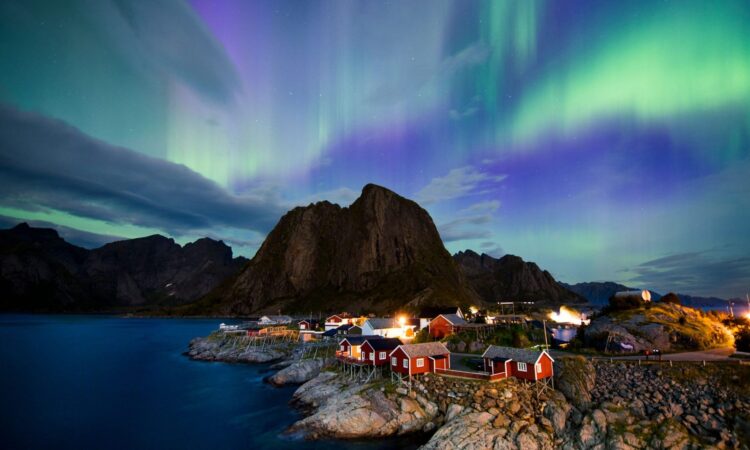
Lofoten is a rugged Norwegian archipelago that stretches 150km into the North Atlantic from the Norwegian mainland, around 200km north of the Arctic Circle. My first visit involved a long sea crossing from Bodø on the mainland, followed by a bus journey and two ferry crossings, after which I ended up in the tiny fishing community of Mølnarodden.
Here, an old rørbu – a type of house used by cod fishermen in springtime – would be my home for three weeks. Up in the Lofoten islands you find endless sandy beaches, accessible only by boat, and huge fjords. On the tiny island of Røst, which we reached by fishing trawler, 1,000 inhabitants were enjoying a great life on what seemed no more than a rock.
That was four decades ago. It’s much easier to get up to Lofoten nowadays. On my recent visit, I took a plane straight from Bodø out to the island airfield at Leknes. Small-scale cod fishing has declined recently, and the rise in tourism has brought prosperity, but also frustration and annoyance.
The cruise ships arrive in vast numbers, and the real trick is to extract some money from them during their brief stroll behind their guide-with-flag. The tiny village of Nusfjord, with its archetypal red rørbus and picturesque setting, originally charged cruisers to enter the village. But in 2019, the 22 permanent residents decided enough was enough and that 50 busloads of cruisers every day was simply too much. They are no longer welcome.
Even less welcome than cruise ships are the “cruise campervans”, which clog the roads, park haphazardly, and often bring all their food with them, spending next to nothing locally.
I recall an indignant islander named Åse Statle telling me how someone had just driven in and emptied his campervan waste tank into the sump on her forecourt without buying so much as a Mars bar.
The worst offenders appear to be the convoys from Italy. Italians are well known for seeking cooler climes in summer, and some travel the length of Europe to the far north of Norway in huge camper convoys, huddled tight so they can’t be overtaken, carrying all their food from home. Sometimes not even so much as a car park fee will find its way into local pockets.
It was cod-fishing that first put Lofoten on the map. Each spring, huge shoals travel from the Barents Sea to the West Fjord to spawn. They are caught, dried on wooden racks and exported, mostly to southern Europe. But fishing today is from bigger boats and is more mechanised, leaving islanders to the whim of the tourist industry, especially in summer.
In winter, people worry about the changing climate, particularly the declining pack ice. In February this year, the temperature in Tromsø was above freezing on most days. This led to a shortage of snow for the Sámi people’s national celebrations, with a huge effort required to move snow to the city street course of the annual reindeer race.
I have seen a lot of Norway’s far north, but it is Lofoten that holds my heart, for the seeming impossibility of its soaring mountains and the astonishing turquoise waters of its long summer days. If you do visit, don’t forget to spend a bit of money






